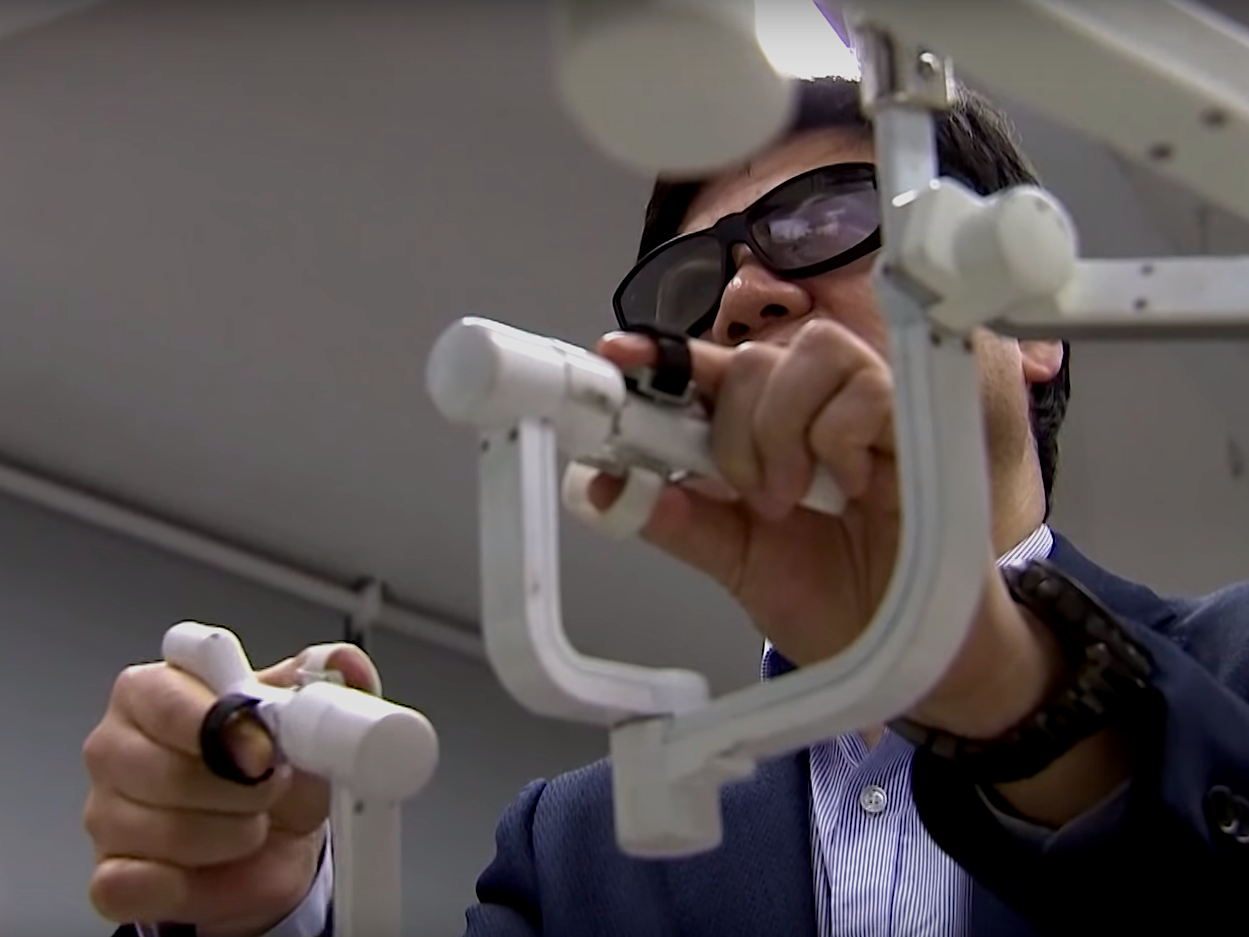- Doctors in China have used 5G to perform remote surgery, inserting a stimulation device in the brain of a Parkinson’s patient from nearly 1,900 miles away.
- 5G makes this possible by cutting latency to an almost instantaneous 2 milliseconds between devices, allowing surgeons to conduct procedures as if they were right next to the patient.
- The tech could give private healthcare providers an edge over rivals, and the ability to provide services to patients further afield as 5G coverage increases.
- Click here for more in the Putting 5G to Work series.
In January this year, cameras were on hand to film the jaw-dropping sight of the world’s first 5G remote surgery on a lab animal.
Two months later, it was a human’s turn , when a doctor in the Chinese city of Sanya inserted a stimulation device in the brain of a Parkinson’s patient nearly 1,900 miles away in Beijing, according to state media.
At this point, you’d be forgiven for thinking you were watching a sci-fi film set sometime in the future, but this is actually present-day surgery, thanks to 5G technology.
Until now, remote surgery using wireless networks has been impossible, because the lag time between input and output lasts around a quarter of a second, sometimes as long as 2 seconds - a delay potentially harmful, possibly fatal, to a patient. Now, 5G promises to change all that, with its latency reduced to an almost instantaneous 2 milliseconds between devices.
Dr Michael Kranzfelder, a senior physician at Munich's Technical University, explains that this speed resembles surgery using traditional cables, when surgeons are able to work directly from monitors without delay, but with the added benefit of being able to operate at a much greater distance from the theatre.
This will apply to both 'tele-presence,' where a surgeon can merely follow an operation on a video connection and offer expert support, and for 'tele-surgery,' where he or she actually operates the surgical device from far away.
The other equally valuable benefit of 5G, according to Kranzfelder, is the increased volume of data that can be processed at great speed during surgery.
"We'll be able to connect many more medical devices together and gain data from the patient, in a way that isn't possible at the moment. Different specialists, not necessarily in the same place, will all be able to work together for the first time," he says.
5G could give private healthcare providers an edge
Such technology has the potential to transform the wider surgical industry, with huge benefits for patients. It could also give private healthcare providers an edge over rivals, and the ability to provide services to patients further afield as 5G coverage increases.
"From medical training to providing emergency assistance, it will become much easier to help people in areas we have previously found difficult to access," he says. This means that among the major beneficiaries of 5G will be those in areas currently lacking in medical expertise.
In the longterm, it could also cut the cost of surgery, Kranzfelder says.
"While 5G may eventually bring down the price of surgery, in the initial stages, it may increase it because of the costs of technical investment," he explains. "So the main immediate benefit will be the quality of medical treatment that those who can access 5G will get to enjoy."
For the medical ethicists, there will also be the challenges of managing the huge volumes of medical data that will become so much more easily available. For aspiring surgeons, however, life will not change that much when it comes to training or gaining even more specialist skills.
"We are the generation that already encompasses robotic surgery, so using 5G will not be that much of a leap," reflects Kranzfelder.
